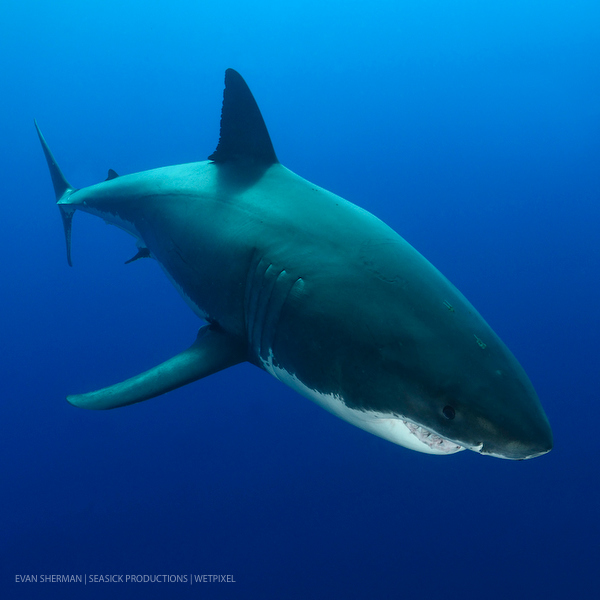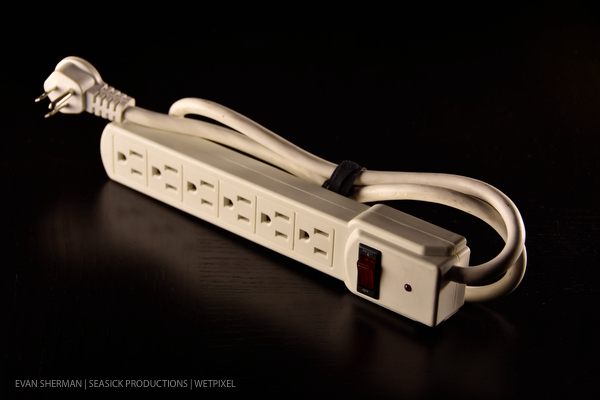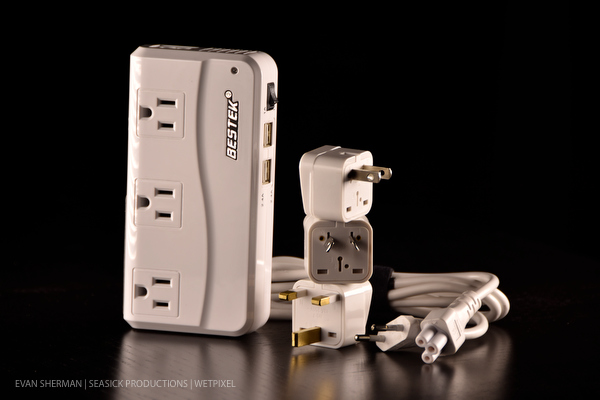Freeze Frame: Electricity
Freeze Frame: Electricity. Without it your camera system is screwed!
By Evan Sherman

So there I was standing at the camera table on one of my favorite liveaboard boats. It was the first day of the voyage and everyone was in camera system set-up mode. Suddenly, the guy beside me plugged his camera’s battery charger directly into the wall. He thought nothing of it. I tried to stop him, but it was too late. There was a flash of light followed by a small plume of smoke. Luckily he wasn’t shocked, but you wouldn’t have known that by the expression on his face. He whimpered, “$#!?, I don’t have another charger.” He just ruined his only camera battery charger and it soon became apparent nobody else on the trip owned a compatible one. He brought extra camera batteries but that didn’t help the situation. His camera system was screwed. He was screwed. It was official; his camera system was dead for the remainder of the trip. Later that evening I swore I heard him crying somewhere on the bow.

The lesson here: never ever plug any of your equipment directly into a foreign power receptacle (and always bring a back-up battery charger). It doesn’t matter what boat, resort, or country—just don’t do it. This applies to all of your electronic equipment: battery chargers, lights, phones, laptops, tablets, etc.
It’s no secret that the world runs on two types of electrical current: 110/125V or 220/240V. North American devices run on 110/125V while most of the world runs on 220/240V. However, when we travel we face new challenges. All liveaboards are powered by generators, as are many of the dive resorts worldwide. The electricity they provide can be “dirty” and damage your equipment. I use the term “dirty” to refer to surges, spikes, interruptions or outages. Electronics typically include a sticker or marking (directly on the product or on the corresponding charger) indicating what power types they are compatible with. Many people believe that if their product is rated to work with both 110/125V and 220/240V, they are not at risk of damaging their gear when charging in foreign countries. They are wrong.
The solution: always plug your equipment into a power strip that has a built-in surge protector, which in return is plugged into an international power converter. Then plug the international power converter into the wall socket.

Converters modify the provided voltage to match the voltage of your device. And as the name states, a surge protector is designed to limit the voltage supplied to a device by either blocking or shorting any unwanted voltages above a safe level. (Editor’s note: If the electrical system that you are plugging into is not grounded, for example most marine power systems, surge protectors are unlikely to work. Please check with the surge protector’s vendor if in doubt).
These items will help prevent catastrophe. With that said, you may still find that in foreign countries your gear charges slowly, your video lights freak out every once in a while and need to be reset, or you never get a full charge on your gear. At that point there is very little you can do. You are at the mercy of the electricity gods, but at least your gear remains undamaged.
Dive vacations are supposed to be some of the best moments of your life not memories of personal drama on the bow of some boat. Do yourself a favor and purchase a couple of power strips and an international power converter. Your gear will thank you.
About the author:
Evan Sherman is the owner of Seasick Productions, a full-service multimedia company that specializes in underwater imaging. Based out of Orange County, California, Seasick Productions provides on location and studio production services around the world. From Evan’s first dive with a camera, he fell in love with underwater videography. His second dive with a camera, he flooded it. He was 19 and had already learned a critical lesson about life as a professional underwater cameraman: passion fuels the artist, tools allow the artist to be. Evan later received his B.A. in Film and Electronic Media from California State University Long Beach. Evan’s professional underwater credits include television networks, Fortune 500 companies and numerous entities within the dive industry.
Evan’s recent film, Bali Close Up, earned top honors at the World ShootOut Underwater Photo Grand Prix in Germany, Video of the Year at the ADEX Voice of the Ocean Competition in Singapore, the Best of Show and Stan Waterman Legacy Award at the Turquoise Bay International Underwater Film Festival in Roatan, and Silver at the Our World Underwater Video Competition. He is a contributor for DivePhotoGuide, Wetpixel and is a SEA&SEA Alpha, ambassador for their products. Throughout the year Evan conducts dive expeditions and imaging workshops.